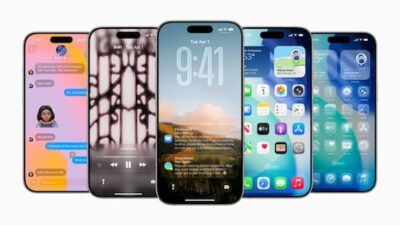The tone of the presentations during its annual Worldwide Developers Conference emphasized incremental upgrades, such as live translation for phone calls and interface enhancements to its operating systems, aimed at enhancing daily life rather than pursuing the grand ambitions for AI touted by Apple’s competitors.
Apple’s software chief, Craig Federighi, indicated that the company is making its core AI model accessible to third-party developers for use in some of its features.
“This work required additional time to meet our high-quality standards,” said Federighi, the senior vice president of software engineering, addressing the delays in features like upgrades to the Siri virtual assistant.
In an early demonstration showcasing potential improvements to Apple apps, the company incorporated image generation from OpenAI’s ChatGPT into its Image Playground app, ensuring that user data would remain confidential unless the user consents to share it with OpenAI.
As key executives launched the company’s annual software developer conference, Apple is navigating a unique landscape of technical and regulatory hurdles.
Shares of Apple, which were steady prior to the event in Cupertino, California, fell by 1.3% on Monday afternoon.
“At a time when the market is questioning Apple’s capacity to lead in the AI domain, the announced features seem merely incremental,” stated Thomas Monteiro, senior analyst at Investing.com. He added, “It feels like the pressure is mounting for Apple each day compared to the innovations being offered by other major AI companies.”
While Apple refrained from making grand commitments to AI advancements for consumers, subtle changes behind the scenes demonstrate its efforts to keep up with competitors. For instance, developers are now able to use ChatGPT’s code generation tools within XCode, essential for app development on Macs and iPhones.
OS UPDATES
Federighi also shared news of a comprehensive redesign for all Apple operating systems.
The overhaul focuses on a design concept referred to as “liquid glass,” featuring partially transparent icons and menus. Apple executives noted that this innovation is made possible by the significantly enhanced custom chips in Apple devices compared to ten years ago.
According to Federighi, the new design will be implemented across operating systems for iPhones, Macs, and other Apple products. He also mentioned that future operating system versions will adopt year-based names instead of sequential numbers, aiming to streamline naming conventions that have become convoluted as Apple’s various operating systems for devices like phones and watches launched at different times.
Among other new features, Apple introduced “Call Screening,” allowing iPhones to automatically answer calls from unknown numbers and inquire about the purpose of the call. Once the caller specifies their reason, the iPhone will provide a transcription and then notify the owner.
Apple also plans to implement live translation for phone calls and enable developers to incorporate its live translation technology into their applications. Notably, the person on the other end of the call will not need an iPhone for this feature to function.
Additionally, Apple’s Visual Intelligence app, which assists users in finding footwear similar to what they point their iPhone camera at, will expand to analyze items displayed on the iPhone screen, linking with various apps. For example, users can see a jacket online and use this feature to locate a similar one available for purchase through an app already installed on their iPhone.



